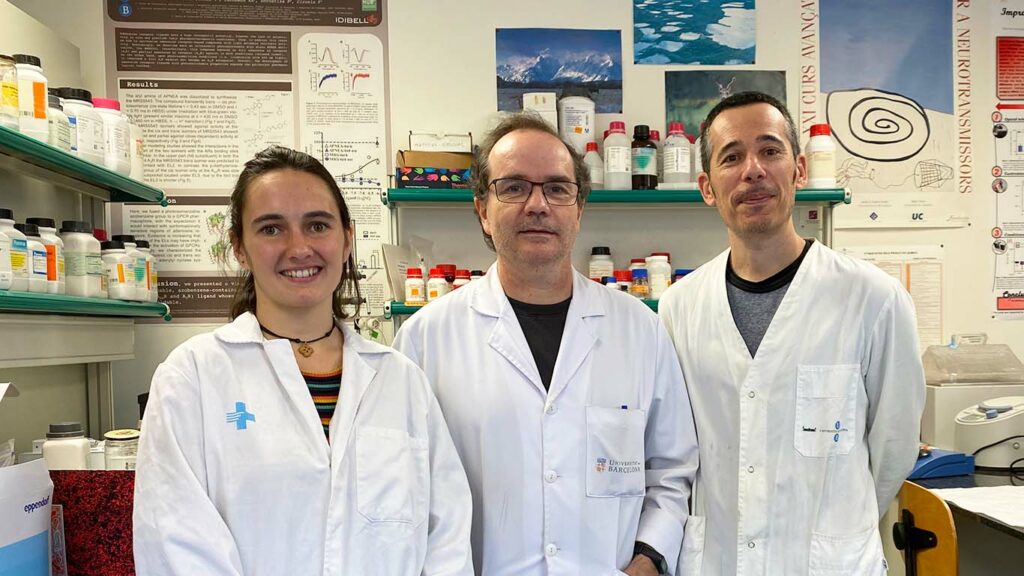While Parkinson’s disease affects 3% of the population over 65 years old and the average age of onset is 60 years. Juvenile Parkinson’s, which accounts for 10% of all Parkinson’s cases, begins before 40 years old. Now, a group of researchers from the Bellvitge Biomedical Research Institute (IDIBELL), the University of Barcelona (UB), and the Neuroscience Institute has deciphered for the first time the molecular mechanism by which this mutation is associated with juvenile Parkinson’s.
The team, led by Dr. Francisco Ciruela, has focused on studying the mechanistic impact of the brain receptor mutation previously defined as a possible cause of the early disease. The results, presented in the journal Biomedicine and Pharmacotherapy, show that the mutation reduces the capacity of this receptor to interact with other adenosine receptors, specifically with the type 2 receptor, which would cause an increase in the excitability of the neuronal circuits in the region of the brain called striated body.
“We postulate that the inability to interact with both adenosine receptors would generate glutamatergic hyperexcitability in the neuronal circuits of the striatum, a key mechanism in the pathogenesis of juvenile Parkinson’s,” says Dr. Ciruela, head of the Neuropharmacology and Pain research group at IDIBELL, and professor at the Faculty of Medicine and Health Sciences at the University of Barcelona.
Imbalance in the excitation of the neural circuit
The studied mutation affects the type 1 adenosine receptor. This receptor exerts an inhibitory effect on its counterpart, the type 2 adenosine receptor, which facilitates the release of glutamate and the excitability of the circuit. Therefore, according to the published results, the mutation would prevent the molecular and functional interaction of both adenosine receptors, and consequently, facilitate the release of glutamate, which would cause hyperexcitability in the neuronal circuits of the striatum.
Adenosine receptors are brain receptors assembled to G proteins and involved in motor functions. Previously, its involvement in neurodegenerative diseases such as Parkinson’s had already been pointed out.
Researchers from the Autonomous University of Barcelona, the Luxembourg Institute of Health (LIH), and the National Institutes of Health in Baltimore have also participated in this study.
The Bellvitge Biomedical Research Institute (IDIBELL) is a biomedical research center created in 2004. It is participated by the Bellvitge University Hospital and the Viladecans Hospital of the Catalan Institute of Health, the Catalan Institute of Oncology, the University of Barcelona and the City Council of L’Hospitalet de Llobregat.
IDIBELL is a member of the Campus of International Excellence of the University of Barcelona HUBc and is part of the CERCA institution of the Generalitat de Catalunya. In 2009 it became one of the first five Spanish research centers accredited as a health research institute by the Carlos III Health Institute. In addition, it is part of the “HR Excellence in Research” program of the European Union and is a member of EATRIS and REGIC. Since 2018, IDIBELL has been an Accredited Center of the AECC Scientific Foundation (FCAECC).

